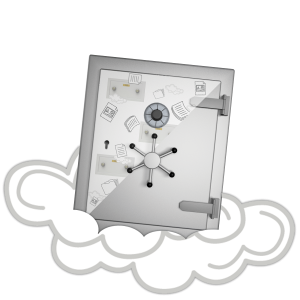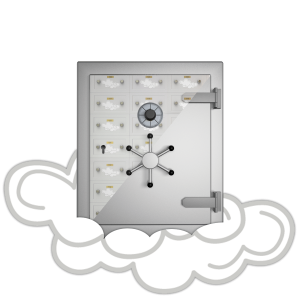Cloud computing offers many advantages for businesses. This technology enables the sharing of resources in a way that dramatically simplifies infrastructure planning. There are a few different cloud computing infrastructures that have both great and small differences.
The Basics of Public Cloud and Private Cloud Computing
It pretty much boils down to this: cloud computing is when you use a third-party cloud provider to host your data or software. Your cloud hosted data doesn’t reside on your local machine, but on a server in your cloud provider’s data center. Cloud computing reduces the hardware application requirements for businesses and pools those resources in the cloud. Trapp Technology has built an incredibly resilient and redundant cloud infrastructure, giving them the ability to host users’ software in the cloud instead of their local machines. To access their software, users log in through a company-specific URL, and then use their software as if it were locally installed.
The cloud is accessing your data from anywhere, at anytime and being able to use any or all of the data and applications that you want.
A cloud host has specified data stored on its servers, a user fires up their computer, connects to the web (and to the servers holding their data), clicks on their application software and are off to the races. It’s really not that complicated once it’s explained, is it? So why do people use the cloud? To sum it up, the cloud enables businesses to do things better, faster, and cheaper.
So with the cloud, vast amounts of information can be connected through both private or public networks. By pooling these resources, the costs of computing, application hosting, content storage and delivery can be significantly reduced. Businesses have the choice to implement applications on Public, Private or Hybrid clouds.
What are the differences between these three models, and how can you determine the right cloud path for your organization? Here are some fundamentals of each to help with the decision-making process.
Public Clouds
Public clouds are often, but not always, owned and operated by third-party service providers. End users benefit because the cost of infrastructure is spread out among all of the users, therefore allowing each individual client to operate on a low-cost, pay as you go pricing model. Additionally, public cloud infrastructures are typically larger in scale than an in-house cloud solution, providing customers with seamless, on-demand scalability.
It is also important to note that with most third-party provider hosted solutions, customers on public clouds share the same infrastructure pool with limited configurations, security protections and availability variances, as these factors are wholly managed and supported by the service provider.

Private Cloud
A private cloud is one that is built exclusively for one business or enterprise. They allow the firm to host applications in the cloud, while addressing concerns regarding data security and control, which is often lacking in a public cloud environment. There are two different kinds of private clouds:
- On-Premise Private Cloud: This format, also known as an “internal cloud,” is hosted within an organization’s own data center. It provides a more standardized process and protection, but is often limited in size and scalability. These are usually reserved for companies with extensive IT personnel on staff, and require the company to build, manage, and maintain their own infrastructure. Also, a firm’s IT department would incur the capital and operational costs for the physical resources with this model. If your application requires constant monitoring, complete control and configurability, this option might be best for you.
- Externally-Hosted Private Cloud: This private cloud model is hosted by an external cloud computing provider. The hosting provider builds an exclusive virtual environment and guarantees absolute privacy. For businesses who can’t or wont use a public cloud infrastructure due to the associated risks, this is the way to go.
Hybrid Cloud
Hybrid clouds are just that — a blend of both public and private clouds. In a hybrid cloud environment, a company can utilize third-party cloud providers in any capacity, be it total or partial. This increases the flexibility of computing. The hybrid cloud can also provide on-demand scalability, making the hybrid cloud a good option for accommodating unexpected surges in workload.
Is Trapp Technology a Public, Private, or Hybrid Cloud?

Trapp Technology is an externally hosted private cloud. None of our clients share their resources with anyone. When you have dedicated resources, the functions of other cloud clients do not affect your users. For example, if a large client with 100 users all log in at the same time, and you have 3 users and need to log in, your performance and efficiency will not be affected. Your resources are built based on your company and how many users you have. We provide each server/client with the necessary resources (processors, RAM, and hard drive) based on your company and users.
The beauty of dedicated resources doesn’t end with storage — it also creates an additional layer of security. Having dedicated resources means your data is separate from other cloud dwellers’ data. If another cloud client uploads a corrupted file to their cloud, it cannot mix in with your data. Your files are safe and sound in your own personal cloud environment.


